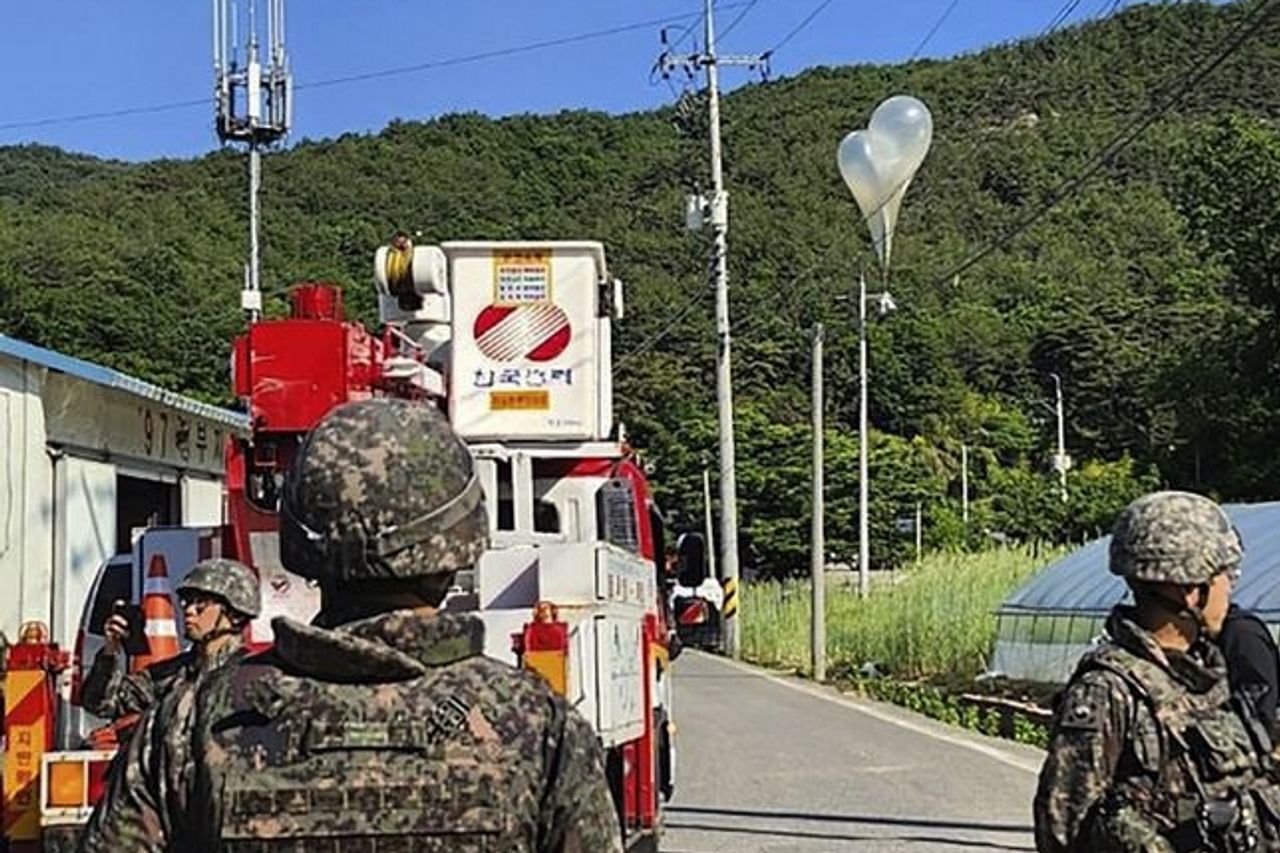South Korea Develops Drones To Fight North Korea's Waste Balloons

JAKARTA - Defense companies, academics, and research institutes are collaborating on developing unmanned aircraft designed to intercept and retrieve North Korean trash balloons in the air, South Korean defense industry officials said Wednesday.
North Korean balloons, which may carry biological or chemical weapons, will be detected and safely dumped by drones. Once commercialized, these drones can patrol the sky in response to the increasing number of balloons from North Korea.
Domestic industry, academic institutions and research organizations are expected to submit a policy proposal for this project to the government next month.
Led by the Jeonbuk National University Institute of Defense Research, this collaboration includes the Korea Atomic Energy Research Institute, UAM Tech, Hanseo University, the Korean Military Academy, and the BioLT virus research company, and others.
"We plan to submit the project to the National Defense Committee of the National Assembly next month, stressing the need to analyze the security threats posed by North Korean air balloons and build a fast response system," said Kang Eun-ho, head of the National University's Defense Research Institute at Jeonbuk and former head of Defense Acquisition Program Administration. as reported by The Korea Times October 10.
The proposed drone will include two types: multi-copters, which can float steadily to detect and collect balloons, and drones take off and land vertically (VTOL), which will be deployed in areas where balloons have caused damage.
Multi-copter aircraft will be equipped with a high sensitivity radiation detector, sample-gathering equipment, robotic arms, and missile-like capture devices. Each drone is expected to operate for at least three hours per surprise attack.
One drone will be tasked with capturing one balloon to ensure efficient gathering. Once captured, the balloons will be transported to the nearest facility for analysis and destruction.
The research and development process is estimated to take three years, with an estimated annual budget of 10 billion won.
However, there are concerns about the effectiveness of the new solution to be ready a few years later, given the direct threat posed by the balloons.
The research team explained that advanced technology is needed to make drones capable of operating in poor weather conditions while carrying heavy equipment, with special testing locations needed to be built for trials.
Once this technology is commercialized, the plan is to deploy drones as the first line of defense along the border, with a control and training base set up in locations such as the Saemangeum reclamation area.
Kang emphasized the importance of getting fast funding through national emergency response projects, suggesting that developed equipment and platforms have the potential to be exported to other countries that face similar threats.
SEE ALSO:
According to the Ministry of Home Affairs and Security, North Korea has delivered more than 5,500 garbage balloons to South Korea between May and September this year.
The balloons have sparked 22 warnings in South Korea, with some of them equipped with incendiary equipment, which causes fires in various areas in the capital.
The South Korean military is hesitant to intercept the balloons in the air due to concerns about the potential fall of dangerous materials.
However, North Korea's chances of using these hot air balloons to transport radioactive substances or pathogens such askoles have raised concerns.

